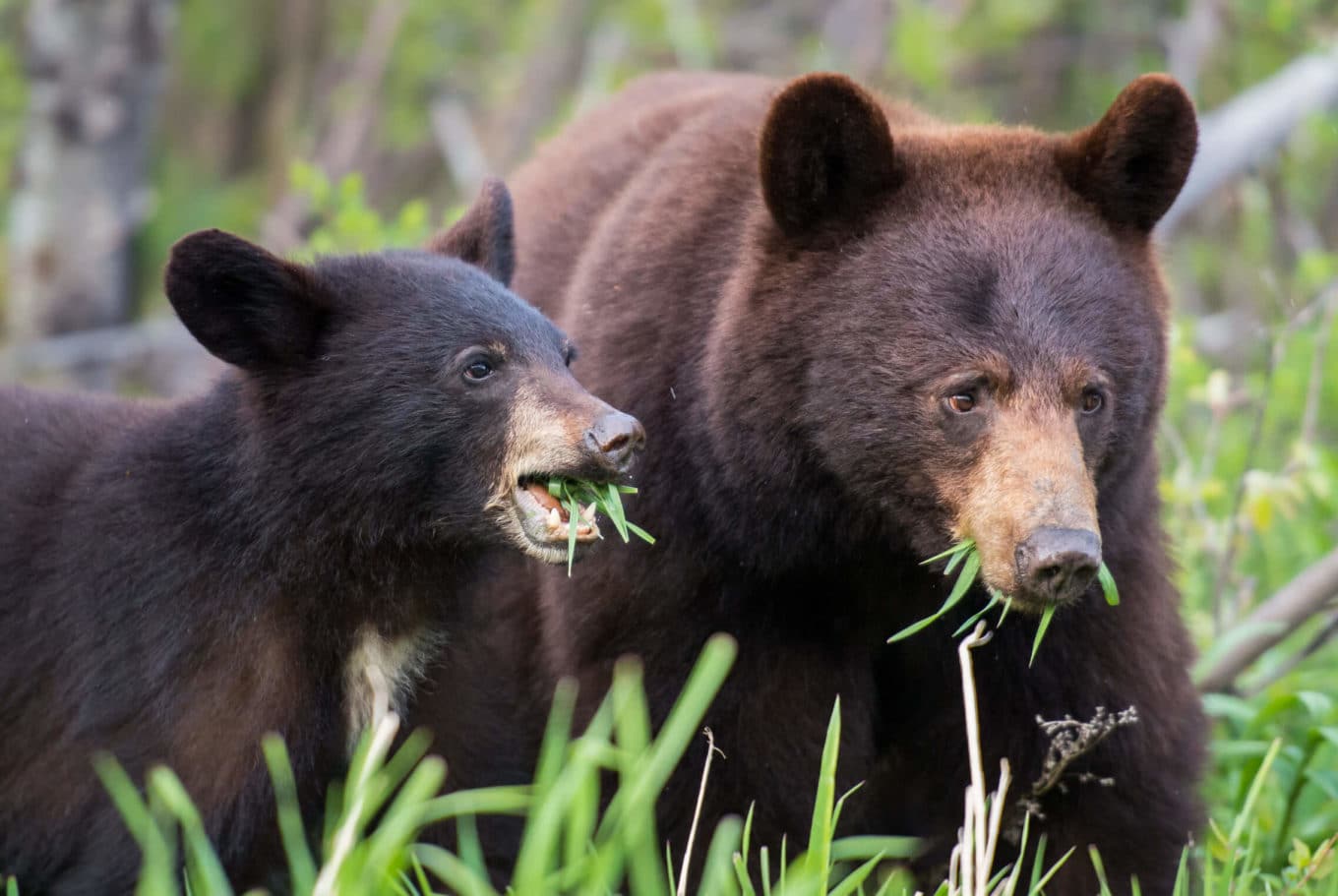
Is it a black, brown, blonde, white, cinnamon, or blue-grey bear? According to the US National Park Service, unless you are living or hiking in Western Canada or states northwest of Wyoming, it is a black bear. Because they come in a wide variety of colors, the name “black bear” is a bit misleading. Still, there are characteristics that set them apart outside of their color.
Black bears are native to and are the most widely present species of bear in North America. They number approximately 600,000, living in most of the United States, all of Canada, and even some parts of Mexico.
They can be found across all ecological zones: forested areas, coastal beaches, and alpine regions.
According to the US National Park Service, black bears have these unique characteristics:
Despite the teeth and claws, black bears are omnivores and eat grass, plants, fruit, nuts, insects, larvae, honey, fish, small mammals, and scavenge left over prey of other predatory animals. Occasionally they will kill young deer or moose calves. Of course, if they have access to human or pet food, they will love it and will seek it out. They will also eat anything that smells like food, including plastic and potentially glass.

If the bear you encounter in the non-arctic wilderness is not a black bear, then it is a grizzly bear also known as a brown bear. Grizzly bears come in less color variation than black bears, but still have slight color variations between dark brown and light yellowish.
The US National Park Service states, “all grizzly bears are brown bears, but not all brown bears are grizzly bears.” Regardless of them being of the same species, grizzly bears are distinct because of the difference of their geographic location, which influences diet, size, and behavior.
Those living in coastal areas of Alaska are called brown bears, while North American inland bears having limited or no access to marine-derived food resources are often smaller and called grizzlies. These bears number approximately 55,000 in North America.
Brown bears are larger than black bears, standing 3-5 feet at the shoulder when on all fours and weighing in between 800-1600 pounds depending on gender and region.
Brown Bears are omnivores, despite the fact that they are at the top of the natural food chain with no enemies except humans. They prefer to eat without putting forth a lot of energy into catching prey. They seek out moths, white bark, pine nuts, ungulates, and salmon or trout. Seasonality and food availability can prompt brown bears to hunt other animals mostly that are weak or young. For the most part, through the height of summer they stick to plants, insects, fish, and scavenge left over prey of other predatory animals.
Coastal brown bears eat a lot of salmon, whereas a grizzly bear’s diets are about 75% vegetarian. In and around Yellowstone Park, where there is an abundance of bison and elk, their diet is meatier. Their long, curved claws and powerful shoulders (evidenced by their characteristic back hump) are well-suited for digging up and hunting for their food sources.
Despite the teeth and claws, black bears are omnivores and eat grass, plants, fruit, nuts, insects, larvae, honey, fish, small mammals, and scavenge left over prey of other predatory animals. Occasionally they will kill young deer or moose calves. Of course, if they have access to human or pet food, they will love it and will seek it out. They will also eat anything that smells like food, including plastic and potentially glass.
Brown bears are larger than black bears, standing 3-5 feet at the shoulder when on all fours and weighing in between 800-1600 pounds depending on gender and region.
Brown Bears are omnivores, despite the fact that they are at the top of the natural food chain with no enemies except humans. They prefer to eat without putting forth a lot of energy into catching prey. They seek out moths, white bark, pine nuts, ungulates, and salmon or trout. Seasonality and food availability can prompt brown bears to hunt other animals mostly that are weak or young. For the most part, through the height of summer they stick to plants, insects, fish, and scavenge left over prey of other predatory animals.
Coastal brown bears eat a lot of salmon, whereas a grizzly bear’s diets are about 75% vegetarian. In and around Yellowstone Park, where there is an abundance of bison and elk, their diet is meatier. Their long, curved claws and powerful shoulders (evidenced by their characteristic back hump) are well-suited for digging up and hunting for their food sources.
